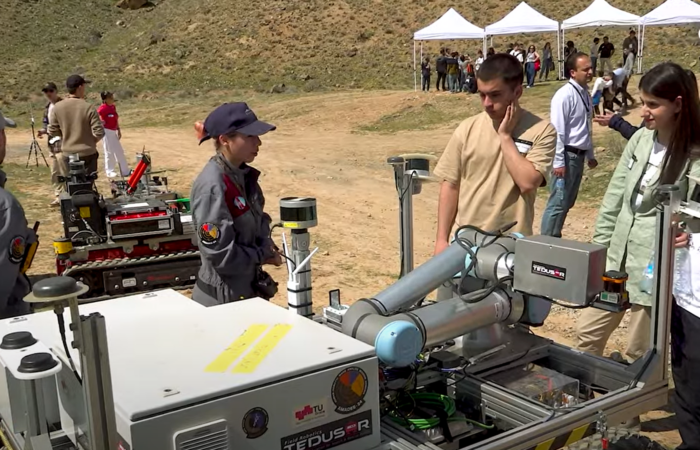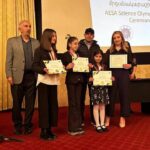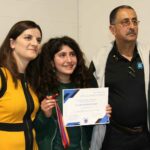On November 17, 2016, NASA presented Dr. Shant Kenderian with an Engineering Excellence Award in recognition for the innovation and service he and his team at The Aerospace Corporation were able to provide.
Bond Quality Inspection for Orion Heat Shield Blocks
In just a few years, the NASA Orion space capsule will transport astronauts into deep space. Upon reentry through Earth’s atmosphere, it will generate temperatures hot enough to melt rock. To protect the capsule and its inhabitants, Orion is equipped with an advanced heat shield designed to endure the extreme conditions of the rapid descent. In fact, it’s so effective, even sound has a hard time penetrating it.
The NASA Engineering and Safety Center (NESC) has been supporting an effort to develop an inspection technique to evaluate the bonding condition between the heatshield blocks and a composite substrate. The goal is to develop a technique capable of detecting all types of flaws, with access only from the outside surface.
To support this goal, specimens with manufactured flaws were created. For about two years, different NASA centers, industry experts, and universities tried scanning the specimens using various ultrasonic, microwave, terahertz, radiographic, and shearographic techniques. All were limited in their success. In particular, they were unable to detect unbonded surfaces in intimate contact, a condition known as a “kissing unbond.”
Dr. Shant Kenderian, AESA past president 2007 and 2008, and his nondestructive evaluation (NDE) team at The Aerospace Corporation, proposed a new approach. To inspect the mechanical condition of the bond, they reasoned, a mechanical wave such as ultrasound should be used, rather than an electromagnetic wave.
However, the nature of the heatshield material presented significant challenges to this approach. The inhomogeneity of the material results in erratic signals. The material also scatters and absorbs sound. For sound to penetrate this material, a low-frequency transducer must be used. This has the consequence of having long wavelengths and a large transducer footprint. The former results in poor temporal resolution between consecutive echoes, and the latter results in poor spatial resolution. To overcome these obstacles, Kenderian’s team used special transducers with very high damping to reduce the duration of ringing usually associated with low-frequency transducers. Also, a particular coupling medium was used that created a gradual change in the acoustic impedance across the interface between the transducer and heatshield material. This, in turn, allowed sound to be injected into the highly attenuative material with minimal losses.
The scan produced cloudy images due to the inhomogeneity of the medium. To compensate, the echo returning from the bond line between the heatshield and composite was normalized against the echo returning from the back wall of the composite. This neutralized the inhomogeneity and scattering effects and produced a signal directly related to the bonding condition and the features along the back wall, if any. Additional information could then be derived by examining the phase of the echo. As sound propagates from the heatshield to the composite, it moves from a region of low acoustic impedance to a region of high acoustic impedance. In the case of an unbond, however, it goes from high to low acoustic impedance. The amplitude of the two echoes are likely to be the same, but the phase will be reversed. The phase of the echo is therefore indicative of the bond condition. This can then be multiplied by the amplitude of the echo, which represents the confidence level of the measurement.
The synthetic aperture focusing technique was applied to the signal, resulting in a significant improvement in the sharpness of the scan. Therefore, it effectively restored some of the spatial resolution that was lost by the large footprint of the transducer. Finally, the probe was connected to two string encoders to produce a real-time image as the inspector performed a freehand scan of the spacecraft.
The inspection technique was demonstrated on a manufacturing design unit and successfully detected all flaw types. It will enable NASA to verify and repair, as necessary, the heat-shield construction and make well informed risk assessments for the future. It may also save astronaut lives. 





